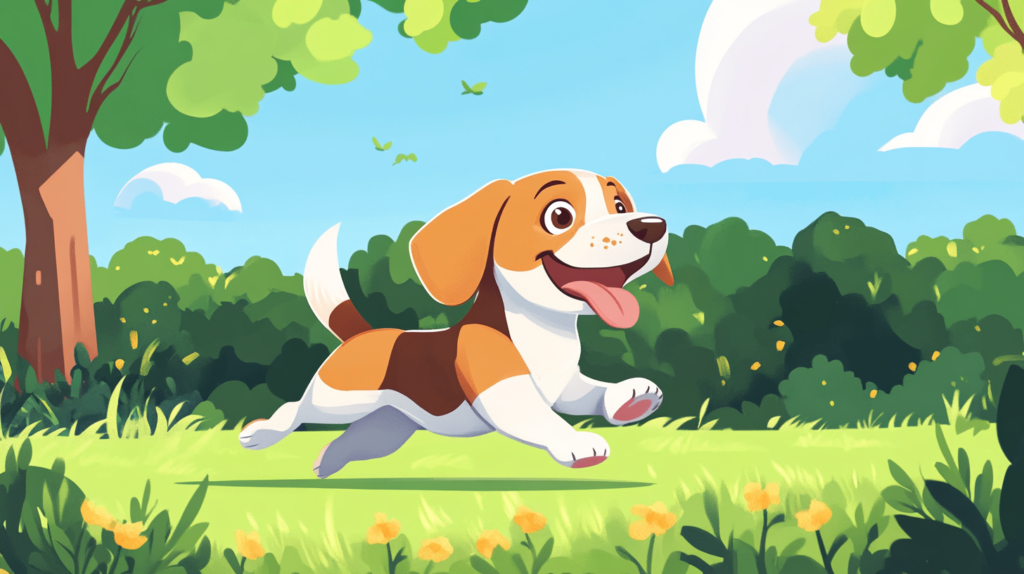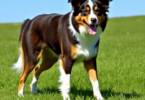Beagle: The Ultimate Breed Guide
Welcome to the Ultimate Beagle Guide! 🐾 Whether you’re a seasoned dog owner or a newbie, there’s something about the Beagle breed that captures hearts worldwide. Known for their friendly demeanor, intelligent eyes, and unmistakable baying howl, Beagles have become one of the most popular pets around.
Why Are Beagles So Adorable?
Size Does Matter: Standing between 13 to 15 inches tall and weighing 20 to 30 pounds, Beagles are compact yet sturdy. A Rainbow of Colors: Their short, smooth coat can be a mix of white, black, brown, and tan. Those Ears and Eyes: Droopy ears and soulful eyes make them irresistibly cute.
What Makes Beagles Unique?
Scent Hounds Extraordinaire: With a nose that’s second only to the Bloodhound, Beagles were originally bred to track small game like rabbits and foxes. Social Butterflies: These dogs love being around people and other pets. Their friendly nature makes them great family companions. Playful Yet Independent: While they are loyal and affectionate, they also have an independent streak that can be a bit challenging during training.
What You’ll Learn Here
This ultimate guide will cover everything you need to know about owning a Beagle. From their fascinating history to understanding their unique characteristics, and even tips on grooming and training—you’re about to become a Beagle expert!

1. The Fascinating History of the Beagle Breed
Curious about the origins of your favorite floppy-eared friend? Let’s dive into the history of Beagles and uncover how these adorable pups came to be.
Origin in England
The story of the English Beagle begins in the 14th century, where small scent hounds were bred to hunt rabbits and hares. These early Beagles were cherished for their extraordinary sense of smell and unyielding determination. Over centuries, they evolved into the lovable companions we know today.
Connection to Other Breeds
Ever wondered who the Beagle’s distant relatives are? Meet the Talbot Hound and Harrier:
- Talbot Hound: This ancient breed, now extinct, was a significant contributor to the Beagle’s genetic makeup. Known for its hunting prowess and keen nose, the Talbot Hound passed on these traits to our modern Beagles.
- Harrier: Another key player in the Beagle’s ancestry, Harriers are similar in appearance but larger. Bred for hunting foxes, they share many characteristics with Beagles, including their stamina and friendly demeanor.
These historical connections highlight how selective breeding has shaped the Beagle into an agile, affectionate, and skilled hunter. Whether you’re taking a leisurely walk or embarking on a thrilling adventure, you can thank history for giving you such a delightful companion!
2. Understanding Beagle Characteristics
Beagles are small but energetic dogs full of personality and charm. Let’s take a closer look at their unique physical traits that set them apart from other breeds.
Size and Weight
Beagles size and weight come in two main size categories:
- 13-inch variety: Typically, these Beagles stand about 13 inches tall at the shoulder and weigh between 20 to 25 pounds.
- 15-inch variety: These slightly taller Beagles range from 13 to 15 inches in height and can weigh anywhere from 25 to 30 pounds.
Despite their small size, Beagles are strong and muscular dogs built for endurance.
Coat Types and Colors
Their short, smooth coat is one of their defining features. This low-maintenance fur comes in a delightful mix of colors:
- Tri-color: The classic combination of black, white, and brown.
- Lemon and White: A softer shade featuring light brown or yellowish patches on a white background.
- Red and White: Striking red markings paired with white.
Occasionally, you might spot a Beagle with blue tick or red tick markings, adding even more uniqueness to their appearance.
Distinctive Features
A few characteristics make Beagles easily recognizable:
- Droopy Ears: Those long, floppy ears not only add to their cuteness but also help trap scents close to their nose.
- Soulful Eyes: Expressive brown or hazel eyes give them an irresistible puppy-dog look.
- Distinct Howl: Known for their baying howl, Beagles have a voice that’s hard to miss (or ignore!).
Their strong sense of smell is legendary, thanks to around 220 million scent receptors—making them excellent trackers. Despite their compact size, Beagles have an athletic build designed for hunting and tracking activities.

3. The Playful Nature of Beagles
Beagles are known for their fun-loving and friendly personality, making them wonderful companions for families. Their endless energy and excitement mean they are always ready for a game of fetch or a run around the yard.
Key Traits:
- Sociability: Beagles thrive on social interactions. They love being around people and other pets, which makes them fantastic family dogs.
- Loyalty: Despite their independent streak, Beagles are incredibly loyal to their families. Their affectionate demeanor often results in strong bonds with their human companions.
- Independence: This breed is known for its independent mindset. While this can lead to some challenges during training sessions, it also showcases their intelligence and problem-solving abilities.
Training Challenges:
Their independent nature can sometimes translate into stubbornness. This means that while Beagles are eager to please, they might require a bit more patience and consistency during training.
“A Beagle’s independence is both a charming and challenging trait,” says many an owner with a smile.
In essence, the Beagle temperament is a delightful mix of playfulness, sociability, loyalty, and just a hint of stubbornness, all wrapped up in an irresistibly cute package. Interestingly, this combination of traits also makes them suitable candidates for roles like therapy dogs, where their friendly nature and loyalty shine through.

4. Common Health Concerns in Beagles
Beagles are generally healthy, but like all breeds, they can be prone to specific health issues due to genetic predispositions.
Common health concerns in Beagles include:
- Hip Dysplasia: This condition occurs when the hip joint doesn’t develop properly, leading to arthritis and pain. Regular vet check-ups and maintaining a healthy weight can help manage this issue.
- Hypothyroidism: Beagles are susceptible to an underactive thyroid gland, which can result in weight gain, lethargy, and skin problems. Medication prescribed by your vet can effectively control hypothyroidism.
- Ear Infections: With their floppy ears, Beagles often suffer from ear infections. Regular ear cleaning is crucial to prevent these painful infections.
- Epilepsy: Some Beagles are genetically predisposed to epilepsy, a neurological disorder that causes seizures. While it can’t be cured, medication can help manage the condition.
- Obesity: Due to their love for food, Beagles are prone to obesity. Proper diet and regular exercise are key to keeping your Beagle at a healthy weight.
- Eye Disorders: Conditions like glaucoma and cherry eye can affect Beagles. Regular eye check-ups can catch these issues early.
Taking proactive steps such as routine vet visits, a balanced diet, and regular exercise will go a long way in ensuring your Beagle stays happy and healthy.

5. Keeping Your Beagle Happy: Exercise Needs and Activities
Beagles are bundles of energy wrapped in adorable fur. Meeting their exercise needs is crucial for a happy, healthy life. These active little hounds thrive on daily physical activities to keep their minds and bodies in tip-top shape.
Daily Exercise Requirements
To maintain a balanced lifestyle, Beagles should get at least one hour of exercise each day. This can be divided into multiple sessions to prevent boredom and manage their energy levels effectively. Here’s a fun way to break it down:
- Morning Walk: A brisk 30-minute walk to kickstart the day.
- Afternoon Playtime: 20 minutes of fetch or agility training.
- Evening Stroll: A relaxing 10-minute walk before bedtime.
Engaging Activities for Beagles
Keeping your Beagle entertained can be as simple as mixing up their exercise routine. Here are some engaging activities that suit their high energy:
- Scent Work: Leverage their incredible sense of smell by setting up scent trails or hiding treats around the yard.
- Fetch: A classic game that provides both exercise and mental stimulation.
- Agility Training: Set up an obstacle course in your backyard to challenge their agility and intelligence.
- Interactive Toys: Puzzle toys that dispense treats can keep them occupied and mentally sharp.
Active owners will find joy in these shared moments, strengthening the bond with their furry friend while ensuring they stay fit and happy. It’s important to remember that dogs have different drives, so understanding your Beagle’s unique needs and preferences will help you tailor their exercise routine for optimal happiness and health.

6. Nutrition Tips for Your Beloved Beagle
Recommended Diet to Ensure Optimal Health
Feeding your Beagle the right diet is essential to keep them healthy and thriving. These little scent hounds are known for their love of food, so it’s crucial to keep their meals balanced and nutritious.
Understanding Beagle’s Dietary Needs
Beagles have specific dietary needs that you should consider when planning their meals:
- Age: Puppies, adults, and seniors have different nutritional requirements.
- Activity Level: Active Beagles may require more calories compared to those who are less active.
- Health Status: Certain health conditions may necessitate special diets.
Important Nutrients for Your Beagle
Providing a well-rounded diet involves ensuring they receive essential nutrients:
- Proteins: High-quality protein sources like chicken, beef, lamb, or fish help build strong muscles.
- Fats: Healthy fats from fish oils or flaxseed support skin and coat health.
- Carbohydrates: Whole grains like brown rice and barley provide energy.
- Vitamins & Minerals: A variety of fruits and vegetables can supply necessary vitamins and minerals.
Portion Control Tips
Given Beagles’ propensity to gain weight easily, portion control is vital:
- Measure Meals: Use a measuring cup to ensure you’re feeding the correct amount based on their size and activity level.
- Scheduled Feeding: Stick to a regular feeding schedule rather than free-feeding.
- Monitor Weight: Regularly check your Beagle’s weight and adjust portions as needed.
Balancing Treats and Main Meals
While it’s tempting to reward your furry friend with treats, moderation is key:
- Healthy Treats: Opt for low-calorie treats made from natural ingredients.
- Limit Snacks: Treats should make up no more than 10% of their daily calorie intake.
Hydration Matters
Don’t forget about hydration:
- Fresh Water: Always provide access to clean, fresh water to keep your Beagle hydrated.
By adhering to these nutrition tips, you’ll ensure that your beloved Beagle stays happy, healthy, and full of energy!

7. Grooming Essentials for Your Beagle’s Well-being
Beagles might be low-maintenance compared to some breeds, but their grooming requirements are still essential to keep them looking sharp and feeling fabulous.
Frequency of Grooming Sessions
- Weekly Brushing: Beagles have a short, dense coat that benefits from weekly brushing. This helps remove loose hair and distribute natural oils for a shiny, healthy appearance.
- Seasonal Shedding: During shedding seasons (spring and fall), you might need to brush your Beagle more frequently to manage the extra fur.
Grooming Techniques Specific to Beagles
- Brushing Tools: Use a soft-bristle brush or a grooming mitt to gently work through your Beagle’s coat. These tools are perfect for removing dead hair and minimizing shedding.
- Nail Trimming: Regular nail trimming is crucial. Long nails can cause discomfort or lead to issues with walking. Aim for a trim every 3-4 weeks.
Ear Cleaning Practices
Beagles’ adorable floppy ears can be a breeding ground for infections if not cared for properly.
- Routine Checks: Inspect their ears weekly for signs of redness, bad odor, or excessive wax.
- Cleaning Tips: Use a dog-specific ear cleaner and cotton balls. Gently wipe the outer part of the ear without probing too deep. If you notice persistent issues, consult your vet.
Bathing Needs Based on Activity Level
- Active Beagles: If your Beagle loves rolling in mud or splashing in puddles, they might need more frequent baths.
- Bathing Schedule: Typically, once every 2-3 months is sufficient unless they get exceptionally dirty. Over-bathing can strip their coat of natural oils.
Pro Tip: Always use dog-specific shampoos that are gentle on their skin and avoid anything with harsh chemicals.
Keeping up with these grooming tips ensures that your Beagle remains clean, comfortable, and ready for snuggle sessions anytime!

8. Effective Training Techniques for Stubborn Yet Lovable Beagles
Training a Beagle can be a delightful challenge. Known for their independent streak, these adorable hounds can test your patience, but with the right training tips and methods, success is within reach.
Challenges in Training Sessions
Beagles are notorious for their stubbornness. Their keen sense of smell often means they’re easily distracted by interesting scents. This makes them wander off or lose focus during training sessions. Patience and consistency are key here:
- Short Attention Span: Keep training sessions brief but frequent to maintain their interest.
- Distractions: Train in a quiet environment initially, gradually introducing distractions as they improve.
Positive Reinforcement Strategies
Using positive reinforcement is one of the most effective training methods for Beagles. This breed responds exceptionally well to rewards-based training:
- Treats: Use small, tasty treats to reward good behavior immediately.
- Praise and Affection: A gentle pat or verbal praise can be just as motivating.
- Consistency: Always reward desired behavior right away to create a clear connection between action and reward.
Example: To teach your Beagle to sit, hold a treat close to their nose, move it upwards causing them to sit naturally, then reward immediately.
Socialization Importance
Early socialization is crucial for developing well-mannered Beagles. Introducing them to various people, environments, and other animals helps mitigate behavioral issues:
- Puppy Classes: Enroll in puppy socialization classes where they can interact with other dogs.
- Playdates: Arrange playdates with other dogs in a safe environment.
- Exposure: Gradually expose them to different sounds, sights, and experiences.
Tip: Regularly take your Beagle on short trips outside your home to get them accustomed to new environments.
With these strategies in place, you’ll find that training your Beagle becomes an enjoyable and rewarding experience for both you and your furry friend!

9. Caring for An Aging Beagle: Lifespan Insights and Senior Care Tips
Beagles typically enjoy a lifespan ranging from 10 to 15 years. As your furry friend approaches the golden years, you’ll notice signs that indicate they’re entering their senior stage. These signs might include:
- Slower movements: Your once energetic beagle may start lagging behind during walks.
- Graying fur: A sprinkle of gray around the muzzle or face can be a tell-tale sign.
- Changes in appetite: Either an increase or decrease in food intake could signal aging.
- Behavioral changes: Increased sleeping, reduced interest in play, or possible grumpiness.
Adapting Care According to Your Aging Dog’s Needs
Adjusting your care routine is crucial for ensuring your senior Beagle remains comfortable and healthy. Here are some tips:
- Diet Adjustments: Older Beagles may benefit from a diet rich in omega-3 fatty acids to support joint health and mobility. Look for senior-specific dog food formulas that cater to their changing nutritional needs.
- Regular Vet Visits: Frequent check-ups become more important as they age. This helps catch potential health issues early on and ensures your Beagle gets the care they need.
- Comfortable Living Space: Provide a cozy bed with extra cushioning to ease joint pain. Ensure their living area is easily accessible without having to climb stairs or jump onto high surfaces.
Special Considerations for Comfort
Making life as comfy as possible for your senior Beagle involves paying attention to small details:
- Moderate Exercise: While they may not run like puppies anymore, gentle walks and light play keep them active without overexertion.
- Mental Stimulation: Engage them with puzzle toys or new scents to sniff around the house. This keeps their mind sharp and happy.
- Joint Supplements: Consider adding glucosamine or chondroitin supplements after consulting with your vet.
Aging gracefully means adapting their environment and routines to match their evolving needs. Taking these steps ensures that your beloved Beagle enjoys a peaceful and comfortable senior life, filled with love and care.

10. Is a Beagle the Right Family Dog For You? Pros And Cons To Consider Before Bringing One Home!
Family-Friendly Traits
Beagles are known for being loving and full of energy, which makes them great companions for families. They have a friendly personality that helps them get along with kids and other pets, creating a happy home environment. Here’s why Beagles are often seen as good family dogs:
- Loving Nature: Beagles enjoy being around people and tend to form strong connections with their human families. They thrive on companionship and love being part of family activities.
- Playfulness: With their boundless energy, Beagles can keep up with even the most active children. Their playful nature makes them excellent playmates, whether it’s a game of fetch in the backyard or a fun wrestling match indoors.
- Friendly Temperament: Beagles are generally friendly towards other pets, including cats and dogs. Early socialization helps ensure they interact well in homes with multiple animals.
Pros and Cons
While Beagles bring a lot of happiness, it’s important to consider both the positives and negatives:
Pros:
- Loyal Companions: They are always loyal to their families.
- Good with Kids: Beagles are patient and gentle, handling the rough play that comes with young children.
- Adaptable: Whether you live in an apartment or a house with a yard, Beagles can adjust as long as they get enough exercise.
Cons:
- Independent Streak: Their independent nature can sometimes make training difficult.
- Vocal Tendencies: Known for their distinctive howl, they may not be suitable if you prefer a quieter pet.
- Exercise Needs: Their high energy levels mean they require regular exercise, which might be challenging for less active families.
With their combination of loving qualities and energetic personality, Beagles can be great additions to many households looking for a good family dog.

FAQs (Frequently Asked Questions)
What are the key characteristics of the Beagle breed?
Beagles are known for their friendly and playful nature, making them great family pets. They have a distinctive appearance with a compact body, long ears, and a keen sense of smell. Their size typically ranges from 20 to 30 pounds, and they come in various coat colors.
What is the history of the Beagle breed?
The Beagle originated in England and has evolved over centuries. It is connected to other breeds like the Talbot Hound and Harrier, showcasing a rich history as both a hunting dog and a beloved pet.
What are common health concerns for Beagles?
Common health issues affecting Beagles include hip dysplasia and hypothyroidism. It’s important for owners to be aware of these genetic predispositions to ensure proper care and regular veterinary check-ups.
How much exercise does a Beagle need?
Beagles require daily exercise to maintain a healthy and happy lifestyle. Engaging activities such as walks, playtime, and interactive games are essential to meet their energy levels.
What should I feed my Beagle for optimal health?
A recommended diet for Beagles should include high-quality protein sources, balanced nutrients, and appropriate portion control. Understanding their dietary needs is crucial for maintaining their overall health.
Are Beagles good family dogs?
Yes, Beagles are excellent family dogs due to their friendly traits. They bond well with children and other pets, making them ideal companions for households looking for an affectionate and sociable dog.






